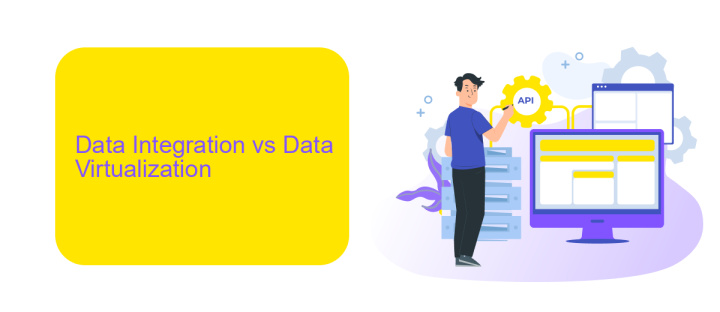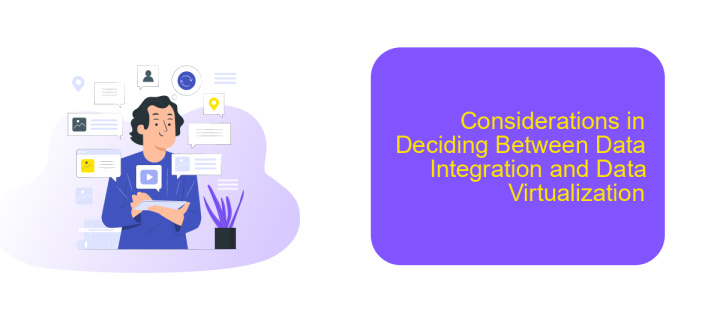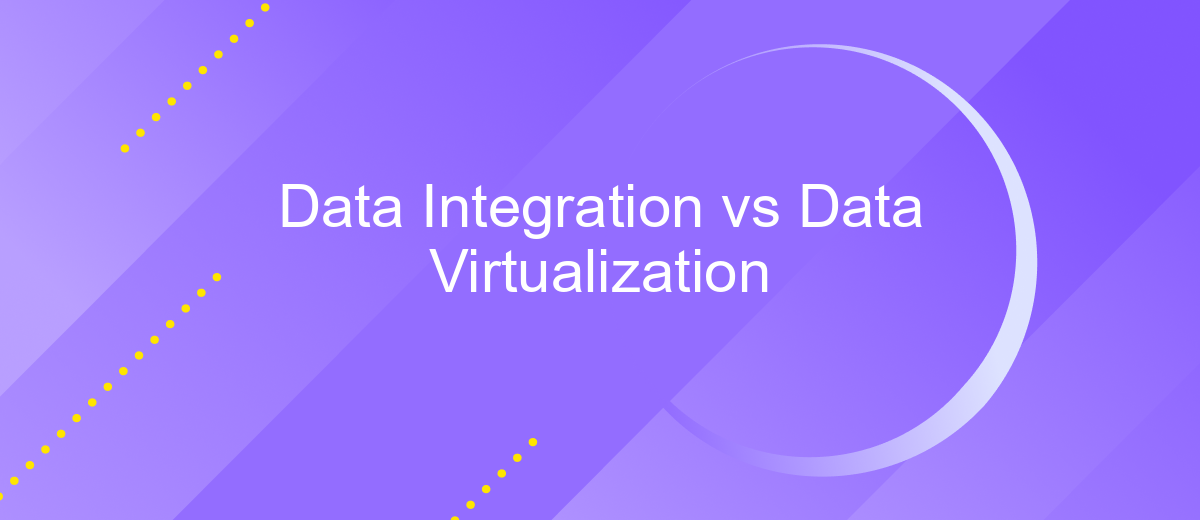Data Integration vs Data Virtualization
In the rapidly evolving landscape of data management, businesses are increasingly exploring efficient ways to handle diverse data sources. Two prominent approaches, Data Integration and Data Virtualization, offer distinct methods for unifying data. This article delves into the differences, advantages, and use cases of each, helping organizations make informed decisions on which strategy best aligns with their goals.
Introduction
In today's data-driven world, organizations are constantly seeking efficient ways to manage and utilize their data. Two prominent approaches that have emerged are Data Integration and Data Virtualization. Both methods aim to streamline data access and improve decision-making processes, but they differ significantly in their execution and benefits.
- Data Integration: This approach involves physically combining data from different sources into a single, unified repository.
- Data Virtualization: Unlike Data Integration, Data Virtualization provides a virtual view of data from various sources without physically moving it.
Choosing between Data Integration and Data Virtualization depends on various factors, including the specific needs of your organization, the complexity of your data environment, and your long-term data strategy. Tools like ApiX-Drive can facilitate these processes by providing seamless integration services, enabling businesses to connect multiple data sources effortlessly. Understanding the strengths and limitations of each approach will help you make an informed decision that aligns with your organizational goals.
Data Integration vs Data Virtualization

Data Integration involves combining data from different sources into a single, unified view. This process typically requires ETL (Extract, Transform, Load) procedures to clean, transform, and load data into a centralized data warehouse. The main advantage of data integration is that it ensures data consistency and quality, making it easier for organizations to perform analytics and reporting. However, the process can be time-consuming and complex, often requiring specialized tools and services like ApiX-Drive, which simplifies the automation of data flows between various applications and databases.
Data Virtualization, on the other hand, provides a real-time, unified view of data without physically moving it. This approach leverages a virtual layer to access and query data across different sources, offering flexibility and speed. Unlike traditional data integration, data virtualization allows for immediate insights and reduces the need for extensive ETL processes. However, it may not always ensure the same level of data consistency and quality. Choosing between data integration and data virtualization depends on the specific needs of the organization, such as the required data freshness, complexity, and the existing IT infrastructure.
Benefits of Data Virtualization

Data virtualization offers numerous advantages for modern enterprises looking to streamline their data management processes. By providing a unified view of data from multiple sources without the need for physical data movement, it enhances efficiency and reduces the complexity associated with traditional data integration methods.
- Cost Efficiency: Data virtualization eliminates the need for extensive ETL processes, reducing infrastructure and operational costs.
- Real-Time Access: It enables real-time data access and analysis, ensuring that businesses can make timely and informed decisions.
- Scalability: The technology easily scales to accommodate growing data volumes and diverse data sources.
- Data Governance: It supports robust data governance practices by providing a centralized control point for data access and security.
- Flexibility: Data virtualization platforms, such as ApiX-Drive, facilitate seamless integration with various data sources, enhancing overall flexibility.
Incorporating data virtualization into your data strategy can significantly improve data accessibility and agility. Services like ApiX-Drive further simplify the integration process, allowing businesses to connect disparate data sources effortlessly and maintain a competitive edge in today's data-driven landscape.
Considerations in Deciding Between Data Integration and Data Virtualization

When deciding between data integration and data virtualization, it's crucial to consider the specific needs and constraints of your organization. Data integration involves physically consolidating data from different sources into a single repository, which can be resource-intensive but beneficial for comprehensive data analysis and reporting. On the other hand, data virtualization allows for real-time access to data without moving it, offering flexibility and speed in data retrieval.
Key factors to consider include the volume of data, the complexity of data sources, and the need for real-time access. Additionally, the existing infrastructure and the budget allocated for data management solutions play significant roles in the decision-making process.
- Data Volume: Large datasets may benefit more from data integration.
- Complexity: Diverse data sources might be easier to handle with data virtualization.
- Real-Time Access: Data virtualization excels in providing up-to-date information.
- Infrastructure: Evaluate if your current setup supports either approach.
- Budget: Consider the costs associated with each method, including tools like ApiX-Drive for seamless integration.
Ultimately, the choice between data integration and data virtualization should align with your organization's data strategy and goals. By carefully evaluating these factors, you can select the most suitable approach to enhance your data management capabilities.


Conclusion
In summary, both data integration and data virtualization offer valuable solutions for managing and utilizing data across diverse systems. Data integration focuses on physically merging data from different sources into a single repository, providing a unified view that is ideal for comprehensive analysis and reporting. On the other hand, data virtualization allows for real-time access and manipulation of data without the need for physical consolidation, offering flexibility and speed in data retrieval and usage.
Choosing between these approaches depends on the specific needs and infrastructure of an organization. For those seeking a streamlined way to set up integrations, services like ApiX-Drive can be particularly beneficial. ApiX-Drive simplifies the process of connecting various applications and automating data workflows, making it easier to harness the advantages of both data integration and data virtualization. Ultimately, the right choice will align with the organization's goals, resources, and data strategy.
FAQ
What is the primary difference between Data Integration and Data Virtualization?
When should I use Data Integration over Data Virtualization?
Can Data Integration and Data Virtualization be used together?
What are the performance considerations for Data Virtualization?
How can I automate and manage Data Integration tasks efficiently?
Time is the most valuable resource in today's business realities. By eliminating the routine from work processes, you will get more opportunities to implement the most daring plans and ideas. Choose – you can continue to waste time, money and nerves on inefficient solutions, or you can use ApiX-Drive, automating work processes and achieving results with minimal investment of money, effort and human resources.

